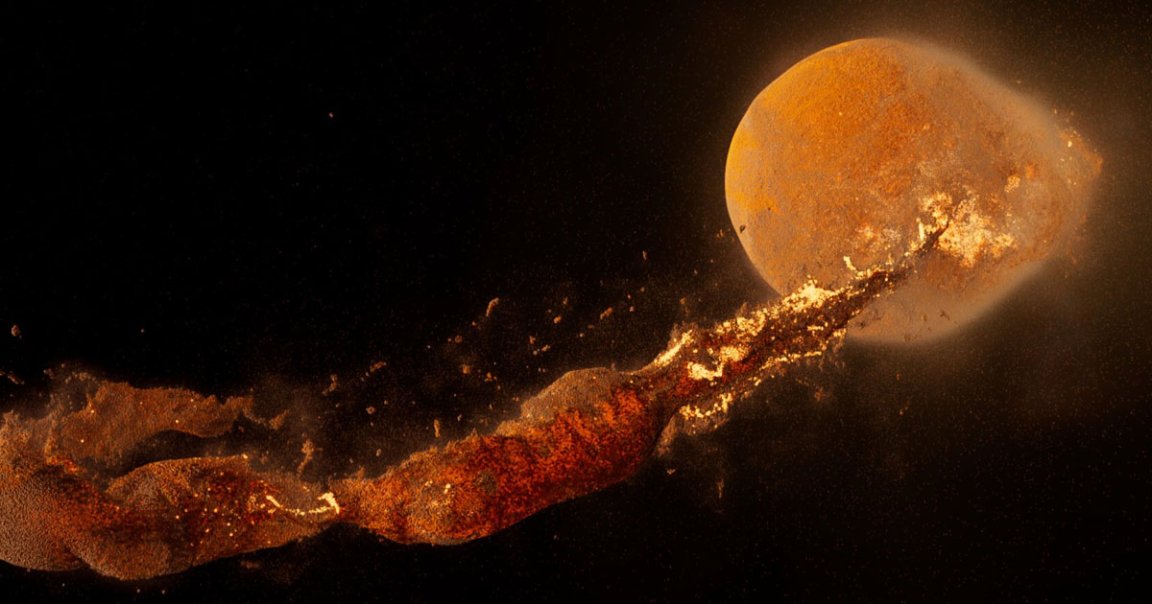
We’re still not entirely sure how the Moon formed billions of years ago — a mystery scientists have been trying to unravel for decades.
But with the help of simulations and supercomputers, we’re getting a whole lot closer.
One of the most popular hypotheses explaining the formation of the Moon suggests it was formed after a Mars-sized object dubbed Theia collided with the Earth around 4.5 billion years ago.
The resulting debris cloud then coalesced over months or years, forming the Moon as we know it today, although details about the hypothetical collision remain a mystery.
One of the biggest pieces of the puzzle to date is the fact that the rocks returned by astronauts during the Apollo missions closely resembled the composition of rocks on Earth.
Now, a stunning new simulation by researchers at Durham University opens up a strikingly different theory: the Moon may have formed in a much shorter time period — a matter of hours, not months or years — following Earth’s and Theia’s collision.
The team used cutting edge supercomputers to simulate hundreds of different impacts between two colliding bodies. The resulting video is a stunning animation of two floating objects, caught in a lava-spewing dance.

Thanks to the much-improved resolution of their simulations as compared to previous efforts, the researchers concluded that a Moon-like satellite likely formed in a much shorter period of time. That’s because less of the material resulting from the collision was in a molten state than previously thought.
In other words, the Moon may be made up of much more Earth material, especially when it comes to its outer layers, which makes sense given what we know about their similarities in composition.
The theory also suggests that the Moon may have an only partially molten core, explaining its unusually thin crust and why its orbit is tilted.
“We went into this project not knowing exactly what the outcomes of these high-resolution simulations would be,” said Jacob Kegerreis, a postdoctoral researcher at NASA’s Ames Research Center, and lead author of a new paper published in The Astrophysical Journal Letters, in a statement.
“So, on top of the big eye-opener that standard resolutions can give you misleading answers, it was extra exciting that the new results could include a tantalizingly Moon-like satellite in orbit,” he added.
It’s an exciting new chapter in our quest to understand where the Earth’s closest neighbor came from.
“The more we learn about how the Moon came to be, the more we discover about the evolution of our own Earth,” said Vincent Eke, a researcher at Durham University and co-author of the paper, in a NASA statement.
READ MORE: Giant impact could have formed the Moon more rapidly, scientists reveal in new simulations [Durham University]
More on the Moon: China and Russia’s Moon Base Alliance May Be Falling Apart